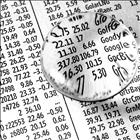 CFDs are a way of trading on the price movements of financial
markets around the world without buying or selling the underlying
asset directly. They provide the opportunity to make profits (or
losses) from a wide range of markets including equities, indices,
currencies and commodities.
CFDs are a way of trading on the price movements of financial
markets around the world without buying or selling the underlying
asset directly. They provide the opportunity to make profits (or
losses) from a wide range of markets including equities, indices,
currencies and commodities.
CFDs can be used to speculate on upward or downward price movements, making them a flexible alternative to traditional trading.
How do CFDs work?
A CFD (Contract for Difference) is basically an agreement to exchange the difference between the opening and closing value of a contract at its close. Rather than buying or selling the underlying instrument on which your contract is based, you simply place a trade with a CFD provider such as City Index. The price of your CFD will then replicate the price of the underlying asset giving you a profit (or a loss) as the price of the underlying moves.
CFD prices
As with traditional share dealing, CFD prices are quoted as a Bid (the price you can sell at) and an Offer (the price you can buy at). You then buy a CFD based on the value of a certain amount of the underlying asset.
Margin trading
To open a CFD position, you need to deposit only a fraction of the full value of your trade, usually around 10-30 per cent. CFD trading therefore offers the possibility of a much better return on your initial investment than paying for the trade in full.
However, any losses will be amplified in the same way, as shown in the example below:
If you bought $10,000 of shares directly and the price moved by $500, you would make a profit (or loss) of 5 per cent. If you opened a CFD on the same shares with a margin of 10 per cent, your outlay would be $1,000, and the value would still move by $500 giving you a profit (or loss) of 50 per cent.
CFD trading examples
CFD trading is straightforward – if you think a market will rise you buy (go ‘long’), and if you think it will fall you sell (go ‘short’).
As with traditional share dealing, CFD prices are quoted as a Bid (the price you can sell at) and an Offer (the price you can buy at). With CFD trading you buy a CFD based on a certain amount of the underlying asset.
The following worked examples show how you can use CFDs to trade a number of different markets.
These examples show trades that result in both profits and losses.
CFD index trade
Selling the US TECH 100.
CFD equity trade
Buying ABC Plc.
CFD's: HomeApply for an account
Before you apply
It is very important that you familiarise yourself with all of our terms and policies and have an understanding of the risks and mechanics of our products.
Online application form
Our application process is available from a new window. You will need to allow pop-ups from our website to complete an application online.

